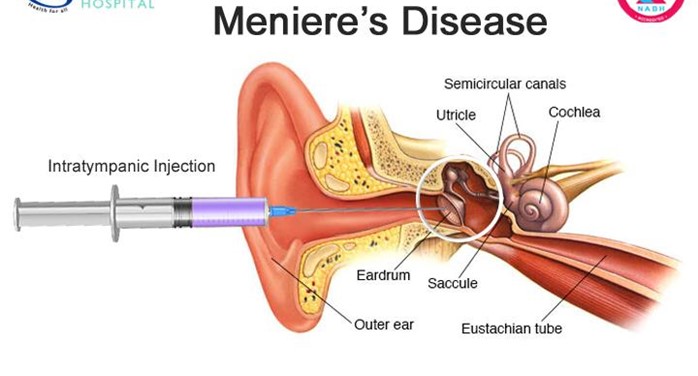A nurse is reviewing the medical record of a client who is experiencing delirium. Which of the following in the health record should the nurse identify as a cause of this disorder?
Seasonal allergies
History of GERD
Benzodiazepines
Completed antibiotics 10 days ago
The Correct Answer is C
Choice A Reason: Seasonal allergies are not a cause of delirium, but a common condition that affects the respiratory system and causes symptoms such as sneezing, runny nose, itchy eyes, or coughing.
Choice B Reason: History of GERD is not a cause of delirium, but a chronic condition that affects the digestive system and causes symptoms such as heartburn, regurgitation, chest pain, or difficulty swallowing.
Choice C Reason: Benzodiazepines are a cause of delirium, especially in older adults or those with cognitive impairment. Benzodiazepines are a class of drugs that act on the central nervous system and cause sedation, relaxation, and reduced anxiety. However, they can also impair memory, attention, orientation, and judgment, and lead to confusion, agitation, hallucinations, or delusions.
Choice D Reason: Completed antibiotics 10 days ago are not a cause of delirium, but a treatment for bacterial infections. Antibiotics can have side effects such as nausea, diarrhea, rash, or allergic reactions, but they do not cause delirium unless they are toxic or interact with other medications.
Nursing Test Bank
Naxlex Comprehensive Predictor Exams
Related Questions
Correct Answer is ["A","D","E"]
Explanation
Choice A reason: This is correct because avoiding swimming underwater can help prevent the worsening of Meniere's disease. Meniere's disease is a disorder of the inner ear that causes episodes of vertigo, tinnitus, hearing loss, and fullness in the ear. Swimming underwater can increase pressure in the ear and trigger an attack. The nurse should advise the client to avoid activities that involve changes in altitude or pressure, such as flying, diving, or climbing.
Choice B reason: This is incorrect because wearing earphones when in crowded places can worsen Meniere's disease. Earphones can increase noise exposure and damage hearing, which is already impaired by Meniere's disease. The nurse should advise the client to avoid loud noises and use hearing aids if needed.
Choice C reason: This is incorrect because keeping eyes open during an acute attack can increase vertigo and nausea. Vertigo is a sensation of spinning or moving when still, which can be caused by Meniere's disease. Keeping eyes open can make vertigo worse by creating a visual mismatch with vestibular signals from the inner ear. The nurse should advise the client to close their eyes or focus on a stationary object during an attack.
Choice D reason: This is correct because sitting or lying down if whirling occurs can help prevent falls or injuries due to vertigo. Whirling is another term for vertigo, which can affect balance and coordination. Sitting or lying down can reduce movement and stabilize posture during an attack. The nurse should advise
the client to avoid driving or operating machinery when experiencing vertigo.
Choice E reason: This is correct because we do not know the exact cause of Meniere's disease. Meniere's disease is thought to be related to abnormal fluid balance or pressure in the inner ear, but what triggers this condition is unknown. The nurse should educate the client about possible risk factors, such as genetics, infections, allergies, autoimmune disorders, or head trauma, but also acknowledge the uncertainty and variability of the disease.
Choice F reason: This is incorrect because damage to the ear from excess noise is not the cause of Meniere's disease. Damage to the ear from excess noise can cause noise-induced hearing loss, which is a type of sensorineural hearing loss that affects the cochlea or the auditory nerve. Meniere's disease is a type of mixed hearing loss that affects both the cochlea and the middle ear. The nurse should not confuse or misinform the client about the cause of their condition.

Correct Answer is ["A","B","D"]
Explanation
Choice A Reason: This is correct because melanoma is a type of skin cancer that arises from melanocytes, which are cells that produce pigment. Melanoma lesions are often irregular in shape and color, and may have different shades of brown or black.
Choice B Reason: This is correct because melanoma is a very aggressive and invasive type of skin cancer that can spread quickly to other parts of the body through the blood or lymphatic system. Melanoma has a high mortality rate if not detected and treated early.
Choice C Reason: This is incorrect because warm and red skin around a lesion may indicate inflammation or infection, but not necessarily melanoma. Melanoma lesions may have other signs, such as bleeding, itching, or ulceration.
Choice D Reason: This is correct because melanoma is associated with exposure to ultraviolet (UV) radiation from sunlight or artificial sources, such as tanning beds. UV radiation can damage the DNA of melanocytes and cause them to grow abnormally.
Choice E Reason: This is incorrect because melanoma lesions are usually not painful unless they are ulcerated or infected. Pain may be a sign of other types of skin conditions, such as burns, blisters, or cuts.
Whether you are a student looking to ace your exams or a practicing nurse seeking to enhance your expertise , our nursing education contents will empower you with the confidence and competence to make a difference in the lives of patients and become a respected leader in the healthcare field.
Visit Naxlex, invest in your future and unlock endless possibilities with our unparalleled nursing education contents today
Report Wrong Answer on the Current Question
Do you disagree with the answer? If yes, what is your expected answer? Explain.
Kindly be descriptive with the issue you are facing.
